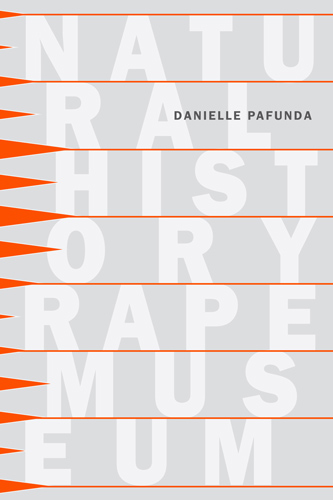Natural History Rape Museum (TRIGGER WARNING)
It’s taken me a long time to write this review, at least six months according to the file creation date, and longer than that based on the date on my notes and the date on the book. But Natural History Rape Museum has been in my thoughts all this time, plaiting its Plath-sharp shrieks into my mind. It’s taken me a long time to write this review, at least six months according to the file creation date, and longer than that based on the date on my notes and the date on the book. But Natural History Rape Museum has been in my thoughts all this time, plaiting its Plath-sharp shrieks into my mind.
We have come here to discuss the rape death bad mood
of my friend, sister, twin sister, that dead girl.
Pafunda is clear from the beginning. There will be genitals, there will be violence, and it will be constant. There will be no relief until the book is closed, and maybe not even then.
The thing is, I don’t want to talk about it. No one wants to talk about it. No one wants to say the word rape, except maybe to describe a particularly weak sports performance and denigrate not the team who did the raping, but the other one, the bad team. We hate them for their weakness, and should we not? Pafunda writes: “I hated myself in your womb from conception.”
That’s pretty fucked up, but not entirely unexpected. In fact, it seems to be almost a cultural imperative. While I was reading and re-reading this book, a few poets announced something that we all probably knew: we have rapists in our midst. A lot of people had things to say about it, but most of it was not about the alleged rapists or harassers. Most arguments have seemed to focus on whether the victims were telling the truth, and how those told the stories told them. People are uncomfortable, and the easiest target is always the messenger.
This book is not about what happened to poets. It is about what happens every day to people everywhere. To educated feminists, to good people, to sober people, and yes to drunk people and bad people and to children. It is always in the passive voice, a thing done to but never done by. Spotlight on the victim, crying and heroic and somehow the cause of her own suffering: “The fuckwad says: my dear, my doughy, dewy doe-eyed dimple / you mustn’t attempt to think while you sphinx.” The recurring character of the fuckwad inserts himself into spaces where he shouldn’t be, but no one ever questions his authority or why he’s there. He has freedom of speech. He is only joking. And he’s only doing what he’s told, as we all are.
In the second section of the book, Pafunda more explicitly outlines the fairy tales we’ve all been fed: “On the bearskin rug in front of the fire / I construct the following tableau.” Violence is mythologized and sanitized, taking the shape of granny and lumberjack, following stage directions, and commenting on its own creation:
This is a movie, the old folks at home. Great wide expanses of
tulle or wheat or some tune like that. Tits rising, tempers, pistons
a Tommy gun. Six notes ascend.
Each poem in this section ends with an injunction to narrate, and invitation to participate in the telling.
In section three, Pafunda’s subject turns even more elemental. Whereas the previous section implied that rape was perhaps an inescapable consequence of our humanity, these poems, each titled after an animal or natural force, suggest that destruction and its telling existed before we did. The wind is judged guilty:
Where once
you kept the word of God, you now spasm
with macrocosm glut [ . . . ]You told no one
You hogged it all closeto your quivering gloss
Silk is not innocent either:
Wormless fiber casket, raveled
fostering no brief hickey between
pap and flank, but end-to-ended,
looming, you grace every brothel,
betrothal, friction snagged union.
Having described the crime and traced its root causes, Pafunda turn to the sentencing phase of the trial. Structurally, this fourth section echoes the first and yanks us back to the present. What will we do with the fuckwad? As in most courts, here criminal and victim are so entangled that their participation and desires blur. Both must be punished. It’s here that Pafunda is at her most Plath-like, inviting you to enjoy a boot to the neck with your alliteration:
The darling punishment. A graph grown boot knife
in the back of the neck. In the sorry cleft. A boot
in the neck, a blue-fisted kisser. A weft slug, a slit
knit kill prone. The punishment was well deserved.
Where section three was a tour through a museum of natural history, the fourth section slides toward art institute. Pafunda paints her subjects from all angles at once. She is Gertrude Stein at the Planned Parenthood, a cubist crisis hotline:
The fuckwad has her caged, rat-style. He sends babies chute face,
chute face. She chews face, face plowed, baby after baby
He box checks, he checks box, he slots baby, he plows
Natural History Rape Museum is exhausting and exhilarating. It seems to conclude with an attempt to reintegrate, to categorize and assimilate. But maybe not. Maybe next month, it will spring up in my mind with an itch and a burning. There are wounds that don’t heal:
I present a meat oven, cracked wide by the uncanny photographer X.
Rotting, I wear this organic coffin awkwardly. I am a convivial herpes, by which
96% are infected, but most have yet to manifest lesions. I am a greater percentage
bacteria, a series of plagiarized infestations. How dare we call ourselves self and
sign our name to these documents? How dare we gather on my face in a paradeformation.





